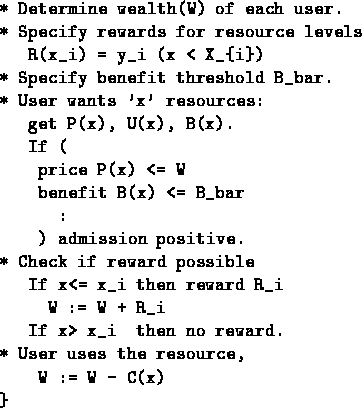
Figure 7: A Reward Algorithm
Trading involves user-level negotiation protocols that promise reward levels for users who agree to resource tradeoffs and maintain resource behavior during a session. Rewards and penalties are mechanisms used to encourage and ensure good behavior from users. Penalties are assessed if a user violates the terms of a negotiated contract. The definition of maintaining good behavior depends on the degree of flexibility the user has to alter the service provided once it has started. There are two possible approaches, static service negotiation and dynamic service alternation. With static service negotiation, the user and SP negotiate the terms of the contract at the start of the session. Rewards and penalties are assessed at the beginning of the session. Once the session has been initiated, the user has no scope to alter service except through re-negotiation with SP. With dynamic service alteration, the user and SP negotiate the terms (i.e. trading rules) of the session. The user is expected to adhere to the terms of the negotiated contract, but may change conditions if desired and receive a penalty. In this case, rewards and penalties can be assessed only at the end of the session. A level-based reward algorithm (Figure 7) calculates the reward that a user obtains for maintaining a given level of service and the penalties assessed for violation of service constraints.